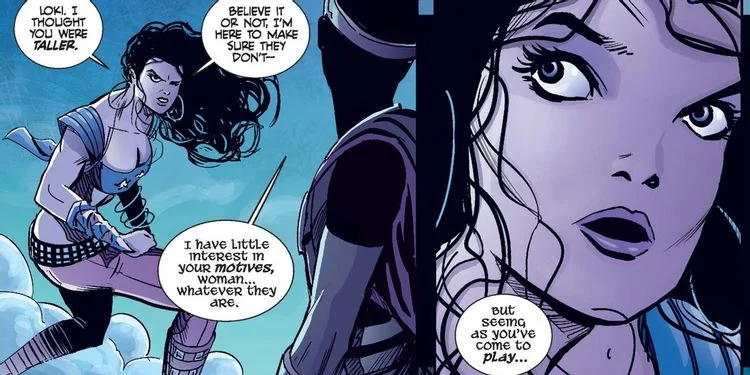
It’s an unfortunate fact that the American comics industry was founded on “The Original Sin” of Siegel and Shuster selling the rights to Superman for $130 in 1938. The selling price and the immediate and huge success of Superman was so notable that some clerk somewhere had the foresight to actually save the cancelled check – and in 2012 it actually surfaced and sold at auction for $160,000.
Siegel and Shuster’s long legal journey to regain some of the profits from the character they created outlasted both of them – by the time all the legal matters were more or less settled in 2013, Joe Shuster, Jerry Siegel and Joanne Siegel, the model for Lois Lane, were all dead, and the various heirs split a stipend and some royalties (6% on Superman and 1% on his publications) based on a 2001 agreement.
The shabby, shameful treatment of Siegel and Shuster was a rallying cry for comics creators in the 70s and beyond, leading to a wide variety of creator owned publishers, standard royalties for even superhero collaborators, and something called “character equity agreements” which “guarantee” payment if characters are used in media. These agreements are somewhat shadowy. Last year, Sam Thielman reported for The Guardian:
DC has a boilerplate internal contract, which the Guardian has seen, which guarantees payments to creators when their characters are used. Marvel’s contracts are similar, according to two sources with knowledge of them, but harder to find; some Marvel creators did not know they existed.
And it’s these agreements which have given rise to the latest skirmishes in the IP wars. When these agreements were drafted 20 or 30 years ago, no one could have imagined that the MCU would be a $25 billion franchise worldwide, with even the spotty DCEU efforts making billions more. Ed Brubaker’s plaintive cry that he made more from a seconds long movie cameo than creating the Winter Soldier sparked a lot of comment, but he’s not the only creator speaking out.
The latest dispute went public a few weeks ago when writer Joe Casey criticized Marvel for “an insult of an offer” for the character America Chavez, who is making her MCU debut in the upcoming Doctor Strange in the Multiverse of Madness. From there she will doubtless enter the teeming streaming world of Disney’s Marvel behemoth, with lunchboxes, underwear and Legos to follow. On the animated and video game side, she’s already there.
Casey told the Hollywood Reporter that as Chavez began to appear in various Marvel media spinoffs and the DSITMOM appearance he approached the publisher asking for paperwork to cover her use. He declined to sign the “special character agreement” they sent over, calling it a pittance.
The “pittance” is generally thought to be around $5000, which some creators have come to call “shut up money.” (Marvel claims they offered Casey more than this.) It is enough to cover a new suit or dress and travel to the red carpet premiere. Indeed, when you see a comics artist Instagramming their attendance at a glitzy premiere party, it gives you a nice feeling. However, simple math reveals that $5000 goes into $25 billion many times – 5 million times, to be exact.
And that’s what Casey hopes to shed light on with his speaking out.
Casey was well aware of the history of comics and aggrieved creators when he worked at Marvel, and went into it with open eyes. He resolved not to create characters for Marvel. Still, over the years, he couldn’t resist creating a few for the publisher, including America Chavez.
“For me, it’s not about money. It’s not even about the respect. I would never expect to be respected by a corporation,” says Casey. “If I’m in a position where I can afford not to take their insult of an offer, and be able to talk about it, maybe the next guy — where that kind of money could change their life — would get a fair shot of receiving that money.”

To be fair, there are a lot of twists with the evolution of the Chavez character – and aren’t there always in the collaborative, evolving world of superhero characters. Casey and artist Nick Dragotta created Chavez in 2011 in the limited series Vengeance. However, she changed into the form she’s best known by in the MCU and beyond in Young Avengers by Kieron Gillen and Jamie McKelvie. Some online trollish commentators used this evolution – and the fact that Casey is a very successful creator on his own, as co-creator of Ben 10 and even a movie he made based on Officer Downe – to downplay his claim.
To that I can only quote The Rock: it doesn’t matter! That Casey is not a pitiful elderly creator selling sketches at Mid-Piscataway Con doesn’t make his claim any less valid. I’ve long noted that the image of the beloved comics elder shaking their fist at the movie screen is not one that the Disney corporation wants to see – it’s an embarrassment, especially when that $25 billion number is trumpeted every chance they get.
But they are equally aware that it doesn’t take much to “shut up” comics folks who are used to pocketing a few grand selling art at a con and calling it a good day.

The case of Gillen and McKelvie is particularly interesting. Not only did their work have a surprisingly huge impact on the Marvel Universe – McKelvie’s designs for Captain Marvel and Ms. Marvel are also MCU canon – but Gillen has blithely added a bunch of characters to the Star Wars universe via the comics. Black Krrsantan, the dark Wookiee bounty hunter who appeared in The Book of Boba Fett, was created by Gillen and Salvador Larroca for the Darth Vader comic. Doctor Aphra, an even more popular character, first appeared in the same series, and has had her own toys and appeared in a video game and could pop up on Disney+ at any moment. Gillen hasn’t spoken out about any of this, aside from sharing some fun facts about the character, so one can only assume he’s happy with whatever arrangement he has.
An even more complicated case emerged this week in the teaser trailer for Thor: Love and Thunder, when one of the trailer’s most iconic images was shown to be directly traced from a panel by Esad Ribic.
I expect Thor: Love and Thunder will be wildly different to Jason Aaron’s run, but damn, if this isn’t the most comic accurate shot you’ve ever seen, I don’t know what is. pic.twitter.com/QeuG1qyzQI
— Dakota, Timeline Curator (@geekritique_dak) April 18, 2022
I’m not surprised to see Ribic’s work being used as movie backgrounds – he’s an astonishingly amazing artist. Maybe in another world he’d be doing concept art for a living. Adi Granov’s great work on Iron Man led to him working as a concept artist for many Marvel films, including Infinity War and Endgame. It took a while for me to realize that Andy Park, Marvel Studio’s immensely influential Director of Visual Development, is the same guy I used to chat with in artist alley at cons.
Cries to “Pay Esad” flooded Twitter on Monday, while others pointed out he was already paid for his work on the Thor comics. In the early days, superhero movies directly referencing iconic comics panels was seen as a nice homage – but as these images and concepts become part of the wider culture, it seems more like a rip off. David Aja speaking out about the Hawkeye TV show basically using his work as a template right down to the lettering is a perfect example.
At any rate, even these brief glimpses of Thor: Love and Thunder reveal that a lot of the film is based on ideas created by Jason Aaron and Ribic in the original Jane Foster storyline. Movies are a collaborative medium, and filtering these through director Taika Waititi’s lens will undoubtedly make something new and different, but he didn’t make it up from whole cloth.
With comics creators basically working as one big R&D team for billion dollar franchises, it’s fair to ask that they get some rewards for being good at what they do.
Casey, Gillen, McKelvie, Aaron and Ribic are big boys who knew what they were signing – they know they signed work for hire agreements and don’t own these characters, as Casey made clear in his own case. And untangling who made what is not easy, given the twisting continuity of comics.
But it’s also fair to expect Marvel and DC to live up to the “character agreement” contracts that they offer.
A quote from former DC publisher Paul Levitz is often mentioned in this regard (DC is known for being pretty methodical with paying character royalties):
“Christian Bale liked looking at Tim Sale’s work before he would go out and strike a pose,” says Levitz. “I’m not sure how you value that. But when you have a movie that is as successful as Batman Begins or Dark Knight, it says that there’s something there. And you should say thank you in some fashion.”
Matt Reeve and Robert Pattinson looking at a bunch of Batman comics, or Waititi admiring Esad Ribic are just the tip of the iceberg when it comes to the ebb and flow of this inspiration. We all know comics are cheap R&D for the movies, but $5000 is really too cheap.
And that brings me to one last element – and a huge one – the shocking announcement yesterday that Netflix lost subscribers for the first time, and expects to lose more. The analysis and I-told-you-sos over this will be rolling out for days and weeks, but it’s worth noting that the era of “Drunken Sailor spending,” as the Ankler put it, is probably over at Netflix. The invading armies of the streaming wars scooping up any scrap of IP is part of what has led to the current boom in comics publishers. But it looks like Netflix will no longer be spending hundreds of millions on movies about Jimmy Hoffa eating ice cream.
While this story is still unfolding, it might seem that this humbling of Netflix might cast a pall over the comics-to streaming pipeline, but I’d say there’s a chance it will have the opposite effect. One of the reasons Netflix faltered is that Disney and Warners got smart about their own streaming services – and we all know what is driving HBO Max and Disney+. You might say it’s Kieron Gillen and Joe Casey.
But not even Netflix saw the bottom dropping out like this. The best-case scenario is this one: Even with this quarter’s loss and next quarter’s loss, it will have 219 million subscribers — way more than any of its competitors. And Netflix is no longer burning a gazillion dollars a year and asking Wall Street to lend it more, so it won’t have problems financing new shows and movies to show its remaining customers. But if it wants to find new subscribers — and keep the ones it has — it will have to find shows they really, really like. And that is going to be harder than ever.
If there’s one thing we know, it’s that viewers seem to really, really like comic book movies and TV shows. I’m hopeful that the pipeline will remain robust as streamers seek known entities with existing fanbases.
And in that case, comics creators should know their rights, and know the value of their work. And like Joe Casey, they shouldn’t be afraid to speak up about their value.
I’ll leave you with a few more pages of Esad Ribic’s work on Thor – imagination and wonder. It’s all there on the page.


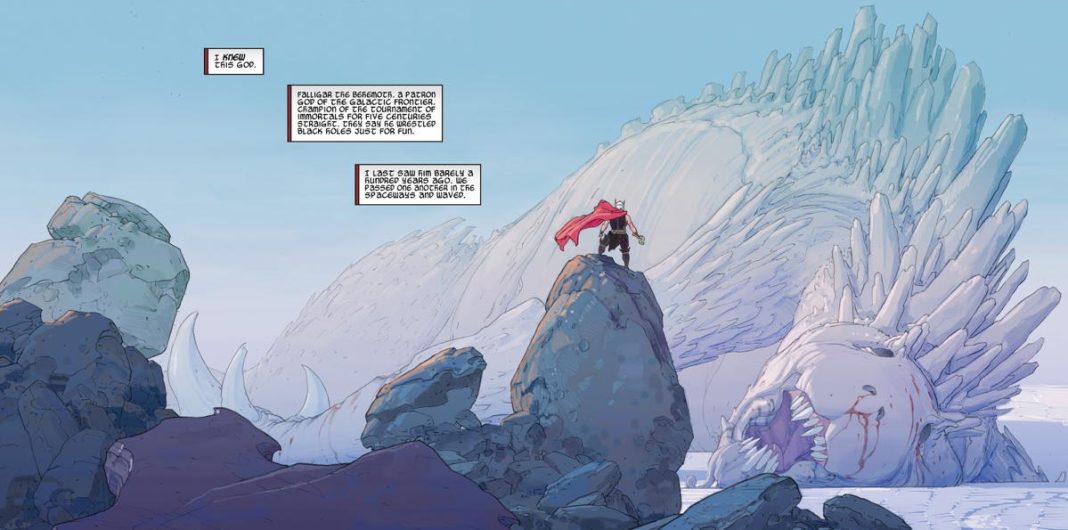
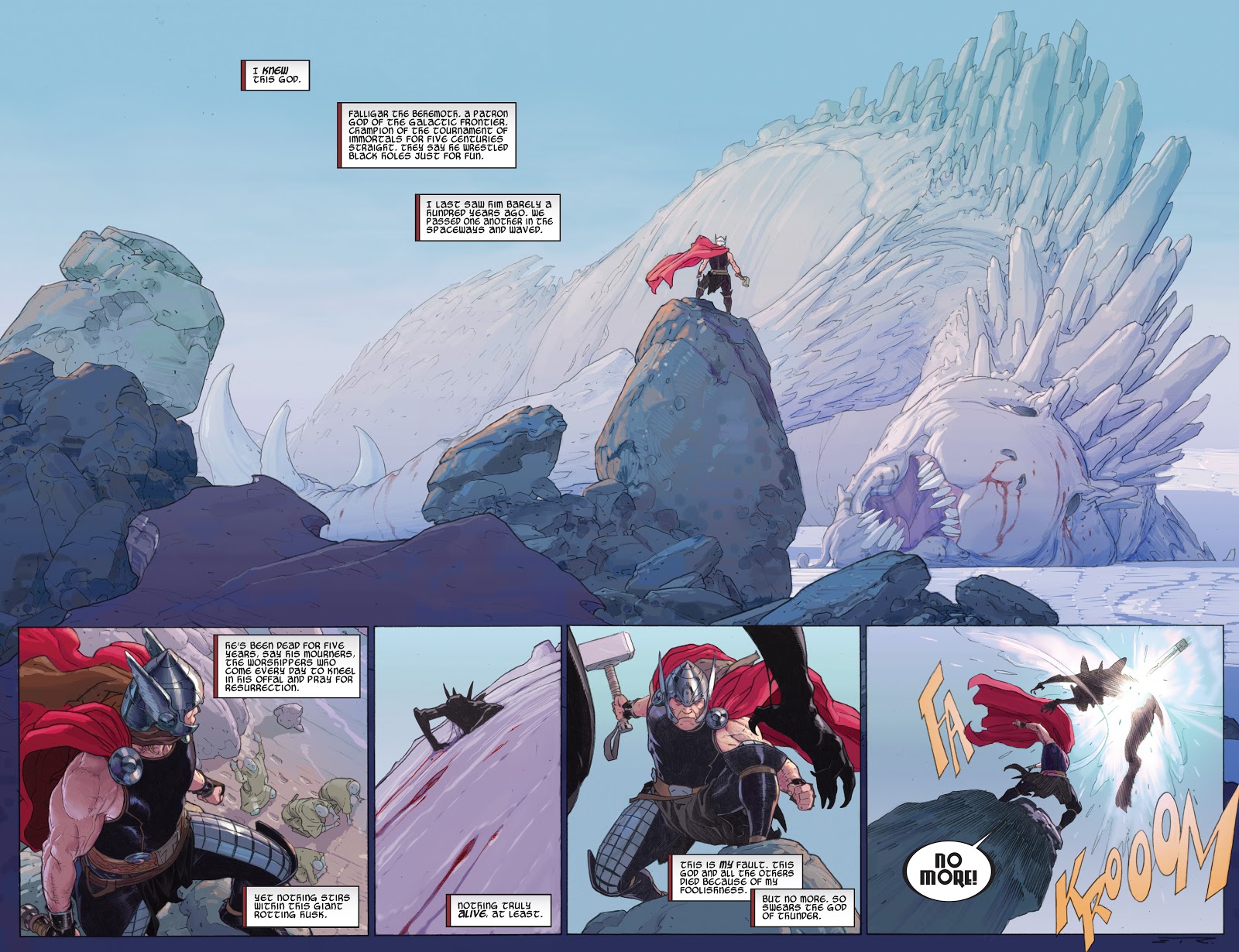
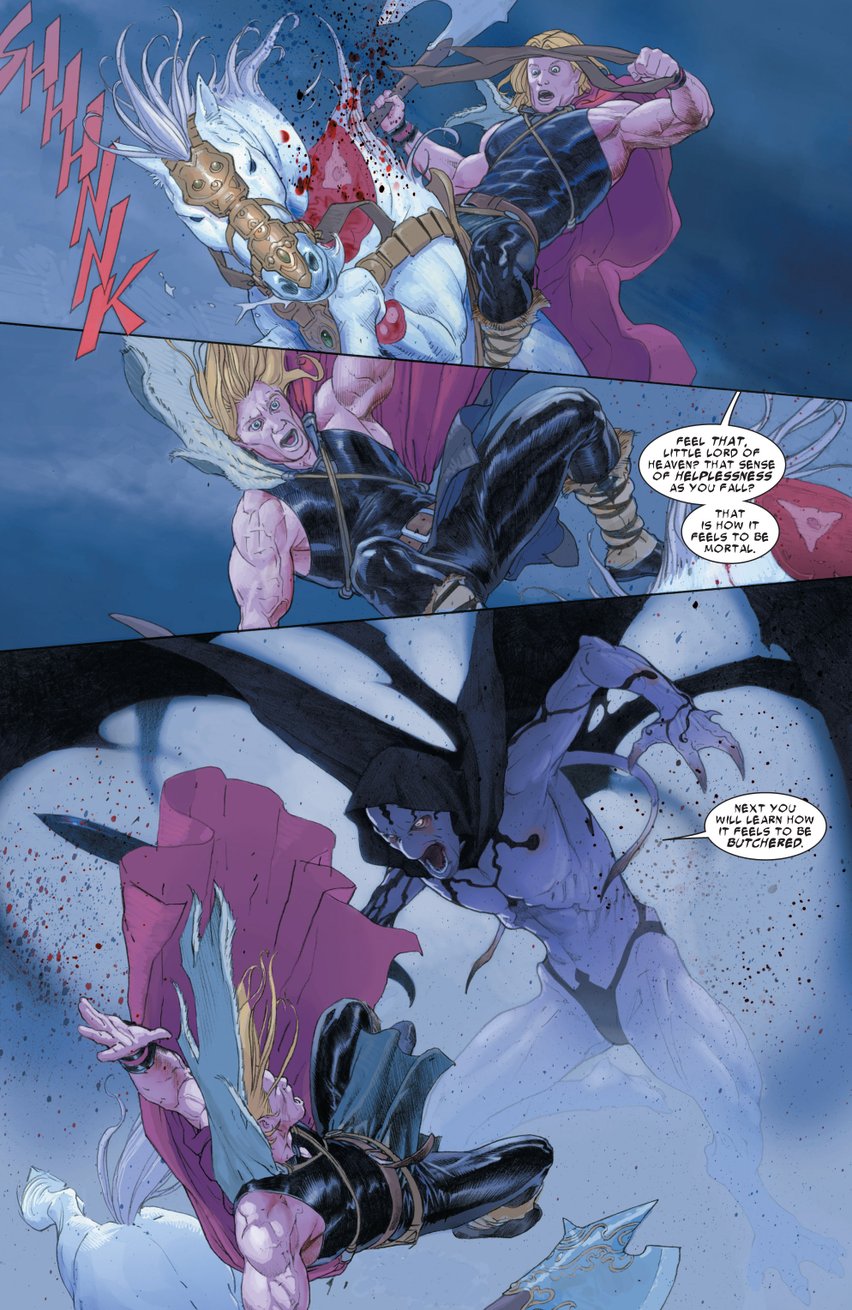
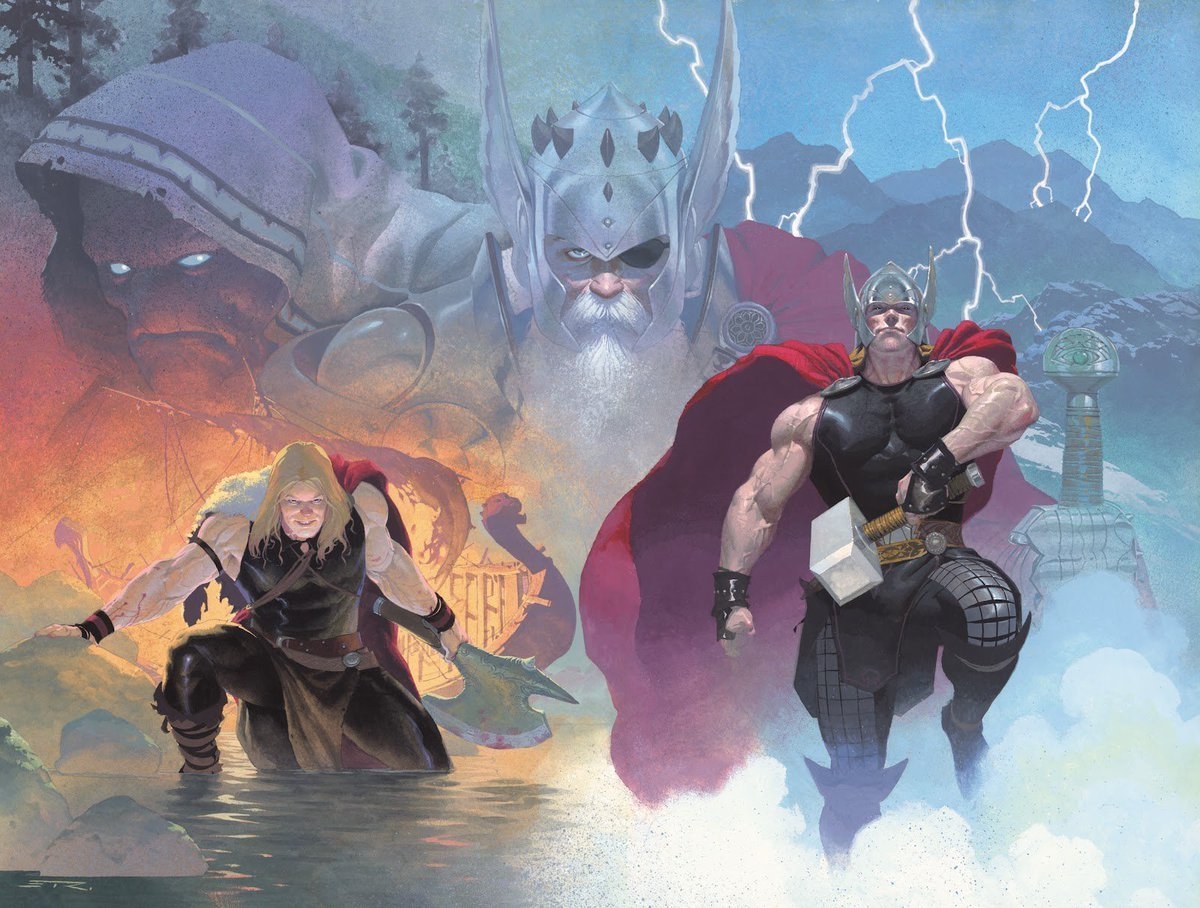

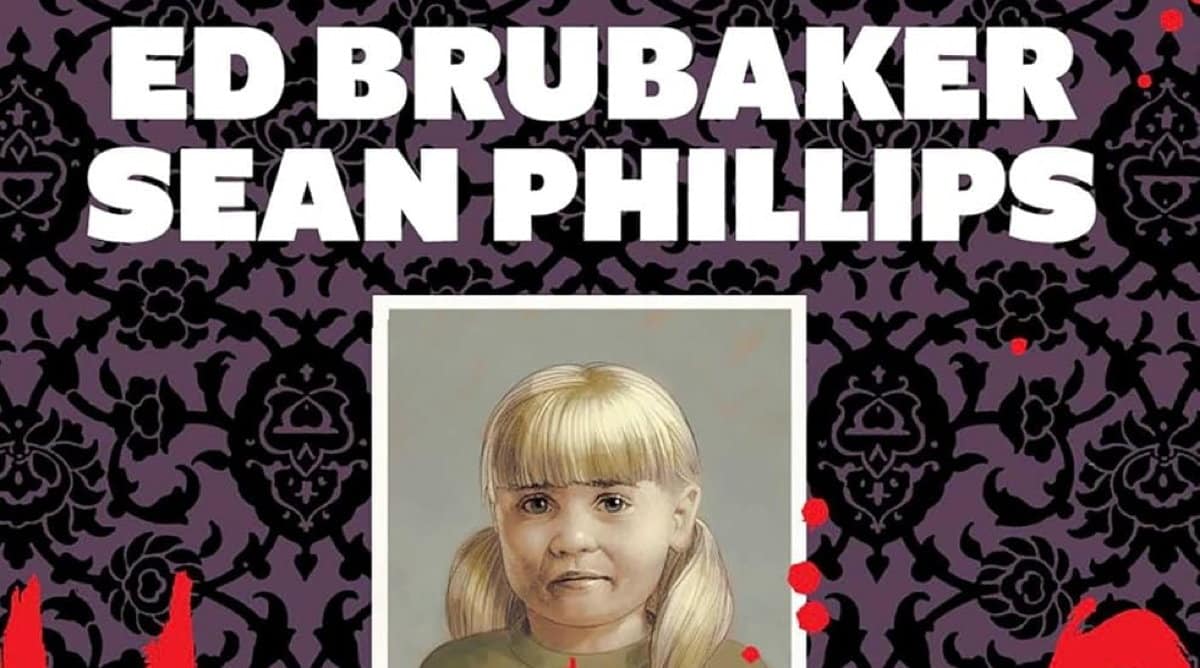




Marvel pays creators based on how much the character is in the film. The creators of Star-Lord got more money for his inclusion in GotG than the creators of Nova
There is a difference between legality and ethics. I wholeheartedly agree with Heidi regarding how well-off any individual comic creator might be: It’s irrelevant to the fact that billionaires are, in effect, devaluing the efforts of artists, writers, etc. whose work they are using to make their own wealth. Comics Beat ran a great essay a few weeks from Filipino comics creator Paolo Cikiamco in which he described the “komiks” environment as a “community” as opposed to an “industry.” Whether you want to look at the current landscape of American comics through the lens of community or industry, the behavior present since at least 1938 seems to actively damage either view.
I’ve heard an artist tell a story about seeing the toys of characters he designed for Ben 10 and asked if he could get some. He was told he could buy them at Target. I wonder if Joe Casey would call that “insulting.”
AZUTU, my dude, when GotG came out, Marvel forgot to put the creator of Star-Lord’s name in the credits. This is not the slam dunk argument you think it is.
Comments are closed.